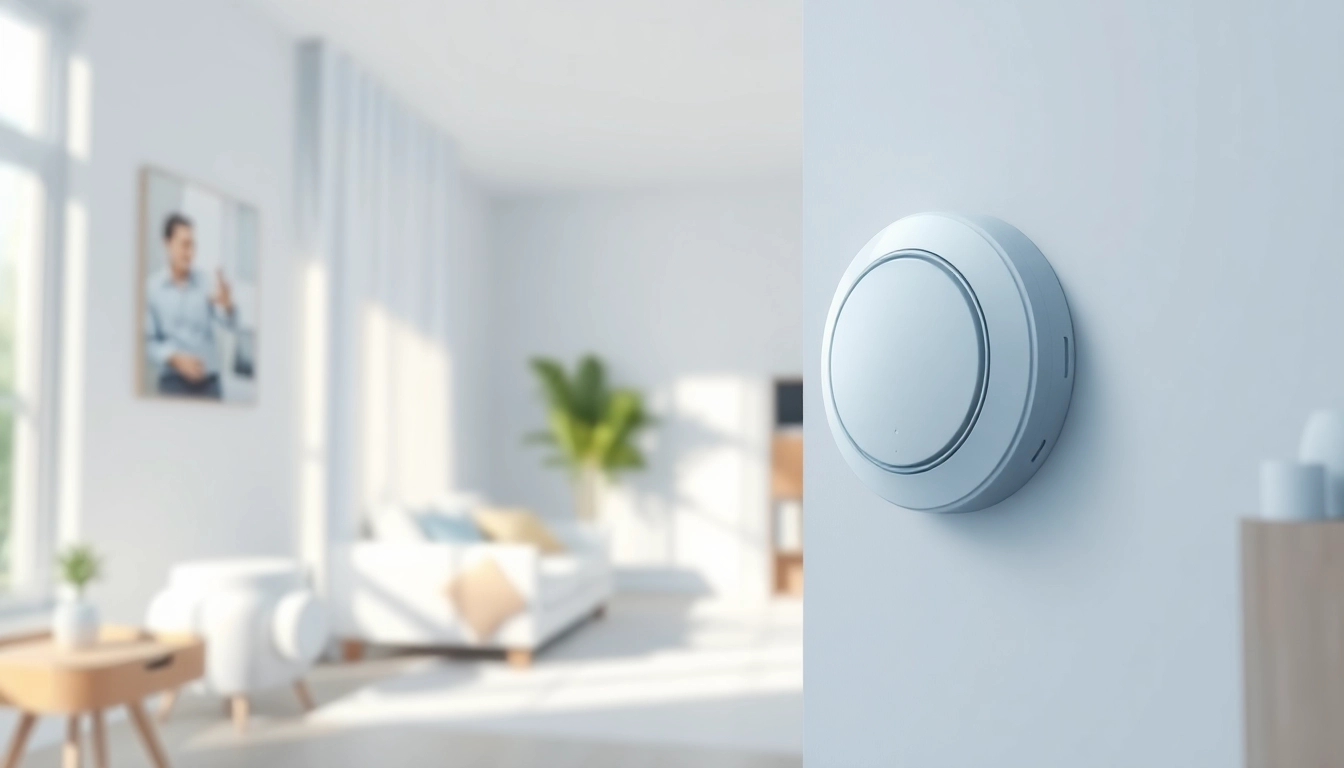Understanding Water Leak Detection
What is Water Leak Detection?
Water leak detection refers to the process and technology used to identify leaks in plumbing systems, walls, ceilings, and foundations. It plays a crucial role in preventing water damage, conserving resources, and maintaining the integrity of structures. Water leak detection can involve both manual methods and modern technology, such as smart sensors that alert homeowners to moisture issues in real time.
Effective Water Leak Detection is essential to avoid larger problems that can escalate in terms of cost and damage over time.
Importance of Early Detection
Early detection of water leaks is vital for numerous reasons. Firstly, it helps prevent extensive damage to property, which might otherwise require expensive repairs. Secondly, undetected leaks can lead to mold growth, which poses health risks and can necessitate professional remediation services. Additionally, early intervention allows for the conservation of water—a critical resource—while also reducing water bills. Being proactive can save homeowners thousands over time.
Common Causes of Water Leaks
Water leaks can stem from various sources, including:
- Pipe Corrosion: Over time, pipes can corrode, leading to leaks. Factors such as water quality and temperature can accelerate this process.
- Improper Installation: Poorly installed plumbing systems can lead to leaks in joints and fittings.
- Temperature Fluctuations: Sudden changes in temperature can cause pipes to expand and contract, leading to cracks or breaks.
- Wear and Tear: Aging plumbing systems naturally suffer from wear and tear, resulting in leaks.
- Environmental Factors: Ground shifts or extreme weather can affect the structural integrity of pipes buried underground.
Types of Water Leak Detection Solutions
Passive Water Leak Detection Systems
Passive systems rely on human intervention to identify leaks. These strategies often include regular visual inspections, monitoring water bills for unusual increases, and utilizing basic tools such as moisture meters. While effective, passive systems can lead to delayed leak detection, increasing the potential for damage.
Active Water Leak Detection Systems
Active systems utilize technology to detect leaks automatically. These include smart water detectors that use sensors placed in areas prone to moisture. When a leak is detected, these systems trigger alerts through mobile apps or home networks. Advanced models can even shut off the water supply automatically, preventing further damage. Active systems significantly enhance response times and can be integrated with home automation systems for maximum efficiency.
Comparing Smart and Traditional Solutions
Smart leak detection solutions offer several advantages over traditional methods:
- Real-Time Monitoring: Smart detectors provide immediate feedback, notifying homeowners as soon as a leak is detected.
- Integration: Many smart devices can be integrated with entire home systems, enabling comprehensive monitoring and control.
- Ease of Use: Modern systems often come with mobile applications, providing users with convenient control and insights into their home’s plumbing.
Conversely, traditional methods can be less expensive but require more manual effort and have a higher risk of missing concealed leaks.
Identifying Signs of Water Leaks
Indicators of Hidden Water Leaks
Hidden leaks can often go unnoticed until they cause notable damage. However, several signs can indicate their presence:
- Increased Water Bills: A sudden spike in water usage may signify a leak.
- Water Stains: Brown or yellow stains on walls, ceilings, or floors can indicate water intrusion.
- Mold Growth: Unexplained mold growth in areas of the home can signify persistent dampness.
- Sound of Running Water: Hearing water running when all fixtures are off could indicate a leak in the system.
Visual and Auditory Leak Detection Techniques
While technology plays a significant role in leak detection, visual and auditory methods can also be effective. Homeowners should regularly inspect plumbing fixtures, pipes, and areas around water heaters for moisture. Listening for unusual sounds, such as dripping or running water, can also provide valuable clues. Tools like moisture meters can help in detecting hidden moisture within walls and floors.
Tools for DIY Water Leak Investigation
When investigating potential leaks, homeowners can employ various tools:
- Moisture Meters: These devices can measure the moisture level in walls and floors, helping to identify hidden leaks.
- Infrared Cameras: Infrared technology can detect temperature differences in walls and ceilings, indicating moisture presence.
- Pipe Inspection Cameras: These allow a visual inspection of pipes, helping to locate blockages or leaks.
- Simple Pressure Tests: Homeowners can perform pressure tests on plumbing systems to identify weaknesses in joints and connections.
Implementing Water Leak Detection in Your Home
Choosing the Right Devices for Your Needs
When selecting leak detection devices, consider factors such as your home’s plumbing layout, the presence of at-risk areas (like basements and attics), and your budget. Basic models may suffice for small homes, while larger properties may benefit from comprehensive systems that cover multiple zones. Look for devices with good reviews and features that fit your family’s lifestyle, such as mobile alerts for peace of mind.
Installation Tips and Best Practices
Proper installation is critical to the performance of leak detection systems. Follow these guidelines:
- Positioning: Place sensors near potential leak sources, including water heaters, under sinks, and near washing machines.
- Testing: Regularly test all devices to ensure they function correctly, particularly after any plumbing work.
- Utilizing Home Automation: Integrate your leak detection devices with home automation systems for enhanced monitoring and control.
Integrating Technology for Smart Home Solutions
As homes become smarter, integrating leak detection into your home automation system offers significant benefits. Smart systems can communicate with other devices, such as thermostats and security cameras, creating a comprehensive monitoring solution. For instance, if a leak is detected, the system could not only alert you but also adjust the thermostat to prevent further condensation and monitor the area with a connected camera. This level of integration enhances both safety and efficiency.
Maintenance and Monitoring for Effective Water Leak Detection
Regular Checks and Inspections
Even with the best detection systems in place, it’s crucial to conduct regular inspections. Schedule monthly checks of all plumbing fixtures and connections, looking for signs of wear or damage. Ensure that your detection devices are clear of debris and functioning properly to maintain reliability.
How to Monitor Leak Detection Systems
Monitoring strategies vary based on the technology employed. Many smart leak detectors offer mobile apps that provide real-time updates, historical data, and alert settings. Familiarize yourself with your system’s features, ensuring you can respond swiftly to alerts. Consider setting up notifications for any detected irregularities to stay ahead of potential issues.
Responding to Alerts and Emergencies
Establish a clear response plan for when alerts are received. This should include immediate steps to take, such as shutting off the main water supply if necessary, and a list of contacts, including plumbers and emergency services. Quick action can prevent significant damage and additional costs related to water leaks.







Leave a Reply